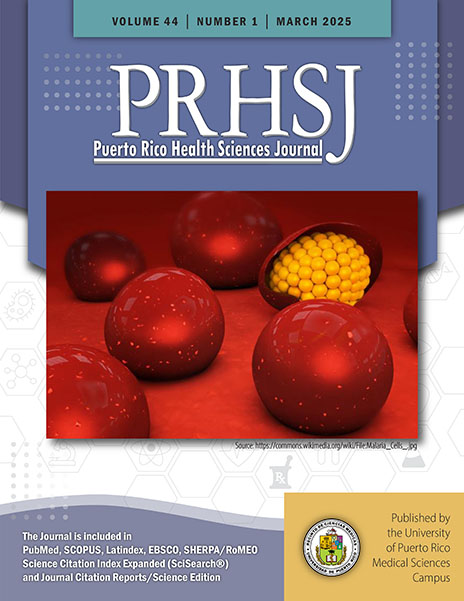Abstract
Objective: Despite the high volume of admissions to the Puerto Rico Trauma Hospital (PRTH), there is no evidence of any recent trends related to pediatric trauma. Therefore, we aimed to update, describe, and compare the epidemiology of the pediatric (≤21 years) trauma population in PR according to age group (≤15 years and 16-21 years). Methods: This was a retrospective cohort study of 853 PRTH pediatric admissions from January 2015 through June 2019. A comparison between age groups was done using Pearson’s chi-square test. The association between age and study outcomes was evaluated with multivariate analyses. Results: Of the admissions, 220 (25.8%) were patients aged 15 years and younger and 633 (74.2%) were patients aged 16 to 21 years; the percentage of males was higher in the latter group (65.5% vs. 79.0%; P < .01). Motor vehicle accidents were the primary injury mechanism. Major trauma (Injury Severity Score >15) incidence was higher in the under 15 group (40.8% vs. 24.5%; P < .01). After adjusting for confounders, 16- to 21-year-old trauma patients were less likely to be admitted to the intensive care unit (ICU) than were their younger counterparts but were more prone to having longer ICU and hospital stays. However, age was not associated with the need for mechanical ventilation (MV), days of MV, or in-hospital mortality. Conclusion: Understanding the specific characteristics of our pediatric patient population can help us guide treatment and elucidate these patients’ needs to improve their outcomes.
Authors who publish with this journal agree to the following terms:
a. Authors retain copyright and grant the journal right of first publication with the work simultaneously licensed under a Creative Commons Attribution License that allows others to share the work with an acknowledgement of the work's authorship and initial publication in this journal.
b. Authors are able to enter into separate, additional contractual arrangements for the non-exclusive distribution of the journal's published version of the work (e.g., post it to an institutional repository or publish it in a book), with an acknowledgement of its initial publication in this journal.
c. Authors are permitted and encouraged to post their work online (e.g., in institutional repositories or on their website) prior to and during the submission process, as it can lead to productive exchanges, as well as earlier and greater citation of published work (See The Effect of Open Access).
